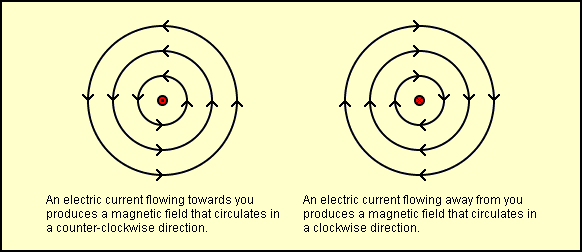Questions and Answers
How do I make an electromagnet?
It is fairly easy to build an electromagnet. All you need to do is wrap some insulated copper wire around an iron core. If you attach a battery to the wire, an electric current will begin to flow and the iron core will become magnetized. When the battery is disconnected, the iron core will lose its magnetism. Follow these steps if you would like to build the electromagnet described in our Magnets and Electromagnets experiment:
Step 1 - Gather the Materials
To build the electromagnet described in our Magnets and Electromagnets experiment, you will need:
One iron nail fifteen centimeters (6 in) long
Three meters (10 ft) of 22 gauge insulated, stranded copper wire
One or more D-cell batteries
A pair of wire strippers
Step 2 - Remove some Insulation
Some of the copper wire needs to be exposed so that the battery can make a good electrical connection. Use a pair of wire strippers to remove a few centimeters of insulation from each end of the wire.
Step 3 - Wrap the Wire Around the Nail
Neatly wrap the wire around the nail. The more wire you wrap around the nail, the stronger your electromagnet will be. Make certain that you leave enough of the wire unwound so that you can attach the battery.

When you wrap the wire around the nail, make certain that you wrap the wire all in one direction. You need to do this because the direction of a magnet field depends on the direction of the electric current creating it. The movement of electric charges creates a magnetic field. If you could see the magnetic field around a wire that has electricity flowing through it, it would look like a series of circles around the wire. If an electric current is flowing directly towards you, the magnetic field created by it circles around the wire in a counter-clockwise direction. If the direction of the electric current is reversed, the magnetic field reverses also and circles the wire in a clockwise direction. If you wrap some of the wire around the nail in one direction and some of the wire in the other direction, the magnetic fields from the different sections fight each other and cancel out, reducing the strength of your magnet.

Step 4 - Connect the Battery
Attach one end of the wire to the positive terminal of the battery and the other end of the wire to the negative terminal of the battery. If all has gone well, your electromagnet is now working!
Don't worry about which end of the wire you attach to the positive terminal of the battery and which one you attach to the negative terminal. Your magnet will work just as well either way. What will change is your magnet's polarity. One end of your magnet will be its north pole and the other end will be its south pole. Reversing the way the battery is connected will reverse the poles of your electromagnet.
Hints to Make Your Electromagnet Stronger
The more turns of wire your magnet has, the better. Keep in mind that the further the wire is from the core, the less effective it will be.
The more current that passes through the wire, the better. Caution! Too much current can be dangerous! As electricity passes through a wire, some of the electrical energy is converted to heat. The more current that flows through a wire, the more heat is generated. If you double the current passing through a wire, the heat generated will increase 4 times! If you triple the current passing through a wire, the heat generated will increase 9 times! Things can quickly become too hot to handle.
Try experimenting with different cores. A thicker core might make a more powerful magnet. Just make certain that the material you choose can be magnetized. You can test your core with a permanent magnet. If a permanent magnet is not attracted to your core, it will not make a good electromagnet. An aluminum bar, for example, is not a good choice for your magnet's core.
Citation and linking information
For questions about this page, please contact Carol McKisson.
